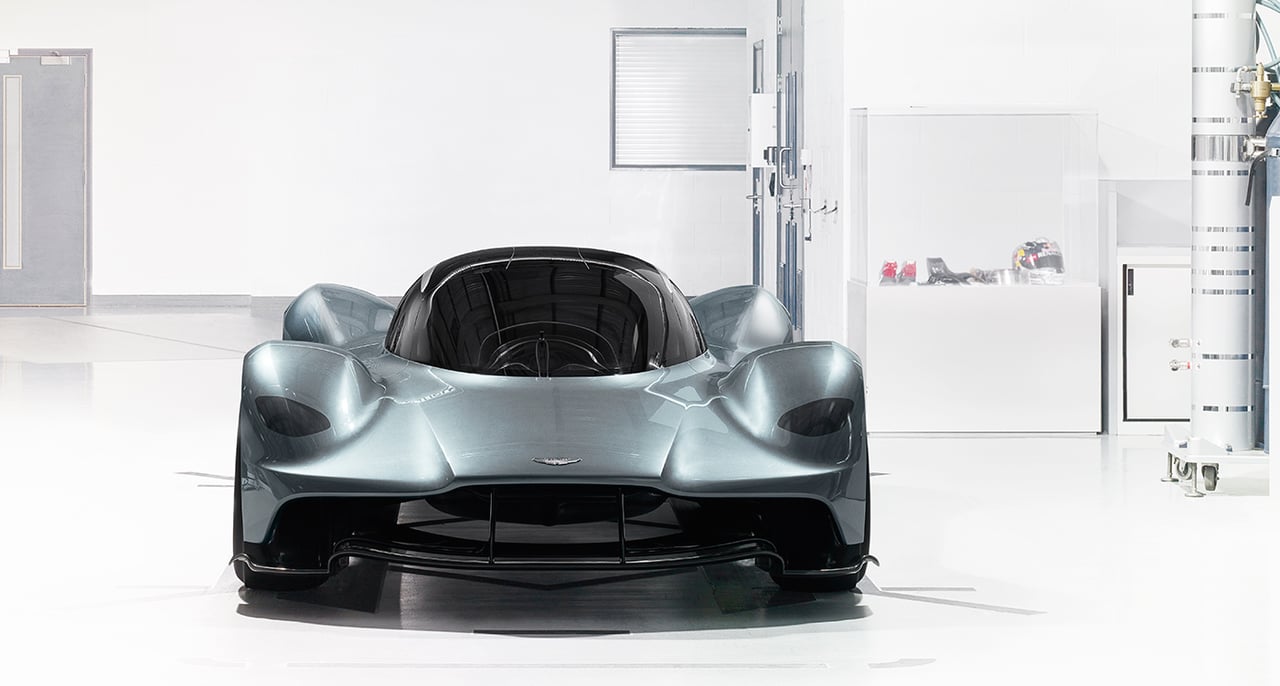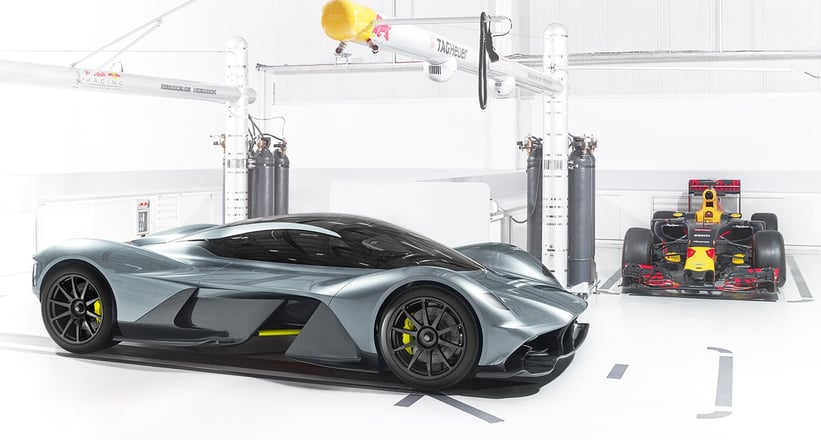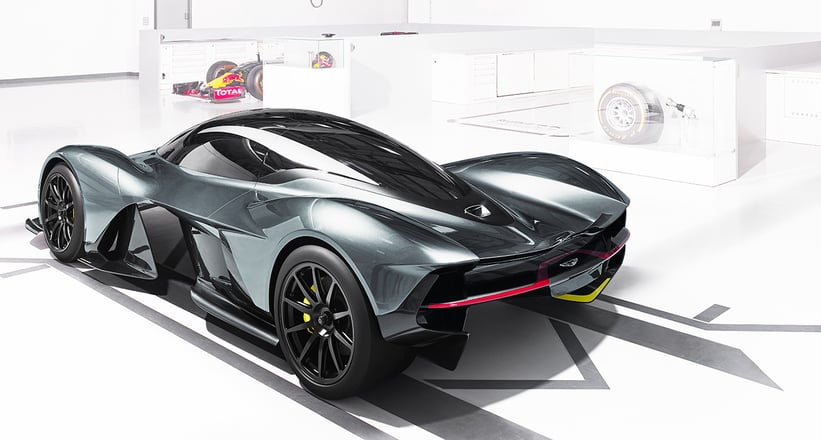Spearheaded by Aston Martin’s design chief Marek Reichman and Red Bull’s engineering guru Adrian Newey, the project has been informed by their collective experience – but also benefits from the freedom afforded to Newey through the lack of regulatory or political restrictions to which he is usually bound. So, while the 001 employs ultra-lightweight construction and cutting-edge aerodynamics, it will not use the equivalent of a turbocharged lawnmower engine, but a good ‘old-fashioned’ (in no more than principle) naturally aspirated V12, sans heavy hybrid technology. Further technological details will be revealed in due course, but AM-RB has promised a 1:1 bhp-per-kilo power-to-weight ratio (possibly the new yardstick by which the next generation of hypercars will be judged). May we remind you that this is not a track-only special à la Vulcan, but a homologated road-going reality ‘engineered to be entirely useable and enjoyable as a road car, but with the capability to perform like no road car before it on a race track’.
The end of the ‘F1 car for the road’ cliché?



Between 99 and 150 road cars will be built (including prototypes), with 25 track-only versions said to have LMP1 prototype-equivalent performance also in development. Aston Martin’s CEO Dr. Andy Palmer brands it a ‘history-making hypercar’ – and regardless of how successful you deem the design in terms of retention of brand cues, few would argue that the overall idea sends out a better signal about the marque’s future than a badge-engineered city car. First deliveries begin of the AM-RB 001 begin in 2018; prices are yet to be revealed, but we imagine you probably wouldn’t get much change from £3m. A substantial figure to most, but a relative bargain for the lucky few when compared to the average F1 team’s R&D budget...
Photos: Aston Martin










